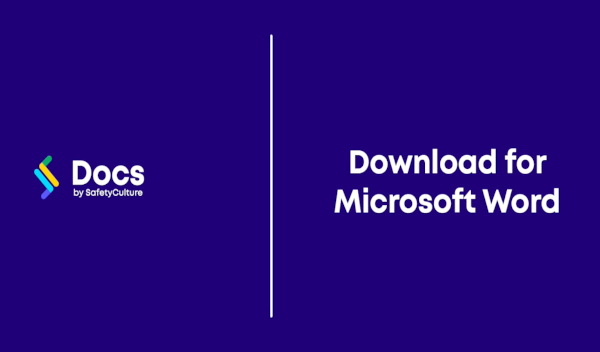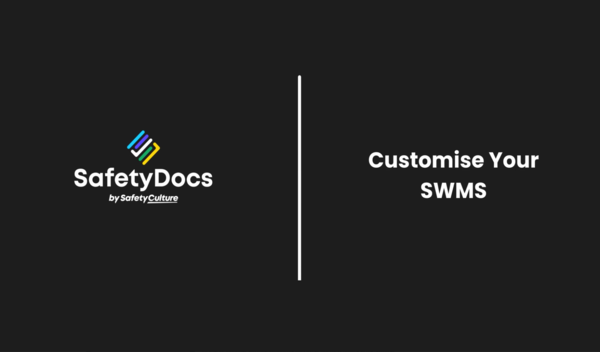Quality Project Management Plan
- Instant Document Delivery via Email.
- Add to your existing management system.
- Can assist in ensuring workers are adequately trained.
- Customisation instructions provided.
- Microsoft Word Format (Fully editable).
- Only pay once (no subscriptions required).
Quality Project Management Plan
This Quality Project Management Plan ensures that all quality-related processes are effectively managed and aligned with industry standards. It outlines the scope, responsibilities, and procedures necessary for maintaining high-quality standards throughout the project lifecycle.
Content Overview
- Project Overview:
- Business Details and Scope: Provides essential information about the business and defines the scope of the project to establish clear boundaries and objectives.
- Project Risks: Details potential risks and mitigation strategies.
- Resourcing and Communication:
- Responsibilities: Details the responsibilities of all individuals involved in the project to ensure accountability and clarity in roles.
- Communication and Reporting, Communication and Reporting Table: Establishes methods for effective communication and reporting to keep all stakeholders informed and summarises communication methods and schedules.
- Regulations, Codes and Standards: Lists the regulations, codes, and standards the project must comply with to ensure legal and industry adherence.
- Competency and Training: Ensures all team members are trained and competent in their roles.
- Quality Management:
- Quality Policy, Objectives, and Key Performance Indicators (KPI): Outlines the policy governing quality management and defines quality objectives and measures performance.
- Quality Audits: Describes the audit process to verify that the quality management system is functioning effectively.
- Identification and Control of Non-conformances: Outlines the process for identifying any deviations from quality standards and describes the methods for controlling and correcting non-conformances to maintain quality.
- Project Delivery:
- Checking and Verification: Details procedures for verifying project deliverables.
- Infrastructure and Environmental Requirements: Ensures all infrastructure and environmental needs are met.
- Subcontractor Management and External Process Providers: Outlines the process for managing subcontractors and external process providers to ensure their work meets the required quality standards.
- Property belonging to Customers or External Providers: Describes the management of property that belongs to customers or external providers.
- Document Management, Creation, and Distribution: Procedures for managing, creating, and distributing project documents.
- Approval Requirements: Lists the requirements for project approval.
- Inspection and Testing Procedure and Monitoring and Measurement Procedure: Describes the procedures for inspecting and testing project components and details the procedures for monitoring and measuring project performance.
- Identification and Traceability: Ensures all project components are identified and traceable.
- Project Completion: Describes the procedures for completing the project and managing changes.
Forms and Supporting Documents:
Our policies and procedures are supported by a range of forms designed to enhance their implementation and effectiveness. These forms ensure structured documentation, monitoring, and continual improvement:
- Quality Risk Assessment Form: Form for assessing quality risks.
- Compliance Requirement Register: Register for documenting compliance requirements.
- Training Needs Register and Worker Training Record: Tracks training needs and records worker training activities.
- Objectives Summary Form and Objectives and Targets Register: Summarises project objectives and tracks targets.
- Audit Report Form and Non-Conformance Report: Forms for documenting audit reports and reporting non-conformances.
- Corrective/Preventive Actions Form and Product Approval Checklist: Forms for recording corrective and preventive actions and for product approval.
- Infrastructure Responsibilities Register and Monitoring Register: Registers for infrastructure responsibilities and logging ongoing monitoring activities.
- Change Request Form: Form for documenting change requests.
Benefits of the Plan
- Improved Customer Satisfaction: Ensures your project meets customer expectations and enhances satisfaction.
- Enhanced Accountability: Clear roles and responsibilities help maintain accountability among all project members.
- Streamlined Processes: Detailed procedures and guidelines make it easier to maintain quality standards.
- Compliance Assurance: Ensures your project meets all relevant regulations, codes, and standards, reducing legal risks.
- Effective Risk Management: Identifies and addresses non-conformances and quality risks to prevent potential issues.
Who is it Suitable for
The Quality Project Management Plan is ideal for small businesses, large enterprises, and various industries. It provides a structured approach to quality management, ensuring high standards are met, customer satisfaction is enhanced, and regulatory compliance is achieved.
Purchase the Quality Project Management Plan today to support your team in delivering projects that meet the highest quality standards.
- Instant Document Delivery via Email.
- Add to your existing management system.
- Can assist in ensuring workers are adequately trained.
- Customisation instructions provided.
- Microsoft Word Format (Fully editable).
- Only pay once (no subscriptions required).
Quality Project Management Plan
This Quality Project Management Plan ensures that all quality-related processes are effectively managed and aligned with industry standards. It outlines the scope, responsibilities, and procedures necessary for maintaining high-quality standards throughout the project lifecycle.
Content Overview
- Project Overview:
- Business Details and Scope: Provides essential information about the business and defines the scope of the project to establish clear boundaries and objectives.
- Project Risks: Details potential risks and mitigation strategies.
- Resourcing and Communication:
- Responsibilities: Details the responsibilities of all individuals involved in the project to ensure accountability and clarity in roles.
- Communication and Reporting, Communication and Reporting Table: Establishes methods for effective communication and reporting to keep all stakeholders informed and summarises communication methods and schedules.
- Regulations, Codes and Standards: Lists the regulations, codes, and standards the project must comply with to ensure legal and industry adherence.
- Competency and Training: Ensures all team members are trained and competent in their roles.
- Quality Management:
- Quality Policy, Objectives, and Key Performance Indicators (KPI): Outlines the policy governing quality management and defines quality objectives and measures performance.
- Quality Audits: Describes the audit process to verify that the quality management system is functioning effectively.
- Identification and Control of Non-conformances: Outlines the process for identifying any deviations from quality standards and describes the methods for controlling and correcting non-conformances to maintain quality.
- Project Delivery:
- Checking and Verification: Details procedures for verifying project deliverables.
- Infrastructure and Environmental Requirements: Ensures all infrastructure and environmental needs are met.
- Subcontractor Management and External Process Providers: Outlines the process for managing subcontractors and external process providers to ensure their work meets the required quality standards.
- Property belonging to Customers or External Providers: Describes the management of property that belongs to customers or external providers.
- Document Management, Creation, and Distribution: Procedures for managing, creating, and distributing project documents.
- Approval Requirements: Lists the requirements for project approval.
- Inspection and Testing Procedure and Monitoring and Measurement Procedure: Describes the procedures for inspecting and testing project components and details the procedures for monitoring and measuring project performance.
- Identification and Traceability: Ensures all project components are identified and traceable.
- Project Completion: Describes the procedures for completing the project and managing changes.
Forms and Supporting Documents:
Our policies and procedures are supported by a range of forms designed to enhance their implementation and effectiveness. These forms ensure structured documentation, monitoring, and continual improvement:
- Quality Risk Assessment Form: Form for assessing quality risks.
- Compliance Requirement Register: Register for documenting compliance requirements.
- Training Needs Register and Worker Training Record: Tracks training needs and records worker training activities.
- Objectives Summary Form and Objectives and Targets Register: Summarises project objectives and tracks targets.
- Audit Report Form and Non-Conformance Report: Forms for documenting audit reports and reporting non-conformances.
- Corrective/Preventive Actions Form and Product Approval Checklist: Forms for recording corrective and preventive actions and for product approval.
- Infrastructure Responsibilities Register and Monitoring Register: Registers for infrastructure responsibilities and logging ongoing monitoring activities.
- Change Request Form: Form for documenting change requests.
Benefits of the Plan
- Improved Customer Satisfaction: Ensures your project meets customer expectations and enhances satisfaction.
- Enhanced Accountability: Clear roles and responsibilities help maintain accountability among all project members.
- Streamlined Processes: Detailed procedures and guidelines make it easier to maintain quality standards.
- Compliance Assurance: Ensures your project meets all relevant regulations, codes, and standards, reducing legal risks.
- Effective Risk Management: Identifies and addresses non-conformances and quality risks to prevent potential issues.
Who is it Suitable for
The Quality Project Management Plan is ideal for small businesses, large enterprises, and various industries. It provides a structured approach to quality management, ensuring high standards are met, customer satisfaction is enhanced, and regulatory compliance is achieved.
Purchase the Quality Project Management Plan today to support your team in delivering projects that meet the highest quality standards.


